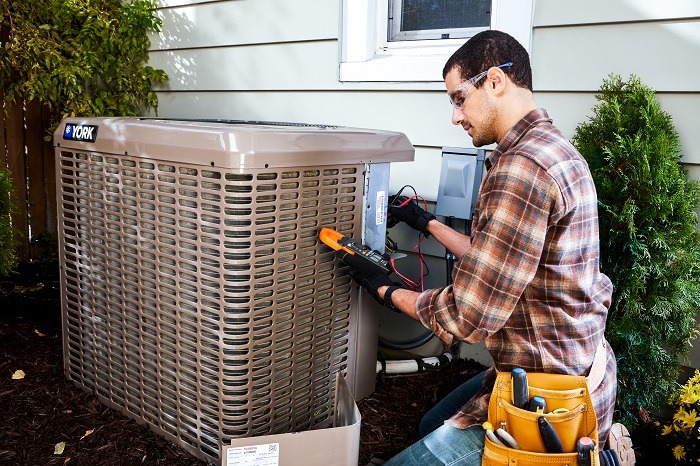Troubleshooting an AC
Having your AC unit suddenly stop working can be frustrating, especially during hot weather. This guide covers common troubleshooting steps to help diagnose and fix issues before calling a professional.
Check the Thermostat Settings
When troubleshooting an air conditioner, start with its main control—the thermostat. Thermostats range from basic models that control temperature and fan operation to advanced programmable and Wi-Fi-enabled versions. Incorrect settings can make it seem like your AC isn’t functioning properly. Signs of thermostat-related issues include:
- Intermittent warm air from vents
- Higher-than-expected temperature readings
- No airflow from the vents
- Before calling a technician, check the following:
- Ensure the thermostat is set to “cool” instead of “heat.”
- Verify the fan setting is on “auto” rather than “on” (which runs the fan constantly) or “off.”
- Adjust the temperature setting if someone changed it.
- For programmable thermostats, review the schedule to ensure it aligns with your comfort needs.
If adjustments don’t resolve the issue, consult an HVAC expert.
Check the Air Filter
A dirty air filter is a common culprit for AC malfunctions. The air filter, located in the furnace cabinet or near the return air duct, traps airborne particles. A clogged filter can restrict airflow, reducing efficiency and comfort. Symptoms of a dirty filter include:
- Warmer indoor temperatures
- Reduced airflow from vents
- Short cycling (AC turning on and off frequently)
To troubleshoot, confirm the thermostat is correctly set, then check and clean or replace the air filter. If the issue persists, contact an HVAC professional.
Low Refrigerant Levels
Your AC system relies on refrigerant to cool your home. If refrigerant levels are low, you may notice:
- Insufficient cooling
- Extended or continuous AC operation
- Short cycling
If your thermostat settings and air filter are in order, low refrigerant levels could be due to a leak. Only a qualified technician should handle refrigerant-related issues.
Electrical Panel Issues
If your AC isn’t running at all, check your home’s electrical panel for:
- A tripped circuit breaker
- A blown fuse
Your AC unit has a dedicated circuit breaker or fuse in the main electrical panel. If a breaker trips repeatedly, call a professional rather than attempting electrical repairs yourself.
Frozen Evaporator Coil
A frozen evaporator coil, typically found inside the air handler, can indicate:
- Higher utility bills
- Poor cooling performance
- Excessive condensation near the unit
- Frost on refrigerant lines or the outdoor unit
- Possible causes include:
- Dirty air filter
- Dust buildup on the coil
- Low refrigerant levels
Running your AC with a frozen coil can cause significant damage. Shut down the system and call an HVAC technician for assistance.
Faulty or Broken Condensing Unit
The condensing unit, located outside, houses critical components such as the compressor and condenser fan. Signs of a malfunctioning unit include:
- Lack of cooling
- Short cycling
- Extended AC run times
- Ice buildup on coils or refrigerant lines
- Complete failure of the unit to turn on
Potential issues include refrigerant leaks, compressor failure, or electrical component malfunctions. Most of these problems require professional diagnosis and repair.
When to Call an Expert
While some troubleshooting steps can resolve minor AC issues, professional expertise is needed for more complex problems. If your AC isn’t working despite checking the thermostat, air filter, and circuit breaker, contact an HVAC technician before minor issues turn into major repairs or system failure.

Contact Us
